Hi, Mike Potter here. Long time Atari game designer saying hi! Going down memory lane.
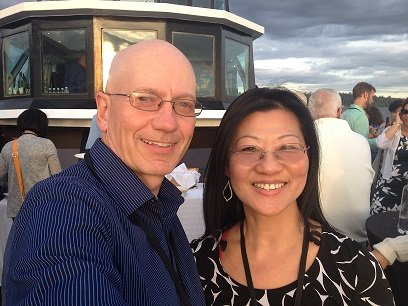
Mike and my wife Kathryn

Mike Potter here. I thought it would be fun to document my computing history. Technology certainly has come a long ways in 43 years since I was a teenager. In 1974 I was 13 years old living in California with my dad. Around that time he took me to a college open house and there they had a computer terminal where I went up to and typed "What is your name?". I pressed Return and it said its name was: Invalid Command ;)
Ok, so I couldn't get it to talk it me like Hal in Space Odyssey and maybe it was just too many other sci-fi movies but I fell in love with technology ever since that time. Back then my main interests were school, movies and going to the arcade with my friends playing video games and pinball. Then in 1975 it happened the first home video game was released, Atari Pong.

Pong at Sears was $100 and I remember telling my dad about all the money I would save him. He gave in and bought me one and boy was I good at it. I could play both sides, beat my dad every time and I spend hours and hours watching a little white ball go back and forth on the TV. Oh, I still went to the arcade any way. Oh well :)
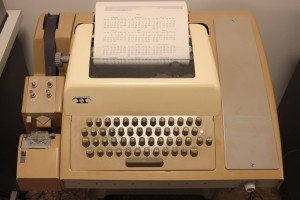
In 1976 I was then in high school and they actually had a computer class. They had a terminal and a mainframe that we had access to. We could write programs in Basic and stored them on punched paper tape. I remember paper dots being everywhere.
The programs being created were not very sophisticated. Just number sorting routines, tic-tact-toe and other very simplistic logic programs for class.
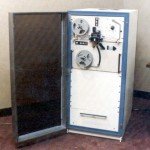
In 1977 a computer store opened about 20 miles away that my dad would take me to and drop me off for the day.
There they had some hobby computers like an Altair 8800 which just had lights and toggle switches. But then they also had a brand new just released Apple II computer. It was $1000 and no way could I afford that. I remember going to that store every weekend and play around for hours and hours.
One of my stories I like to tell is when my dad dropped me off for the day on a Sunday and everything was closed. Back then we didn't have cell phones and I didn't have anyone's phone # and no money so I walked home. It took me 8 hours. Now I had my own story to tell any kids I would have. My dad would always say he walked 300 miles to school uphill both ways in the snow. But mine was true.
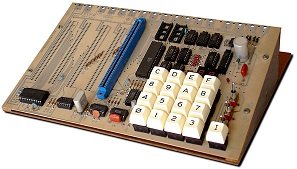
Also around that time the Cosmac Elf II computer board came out and it was $100. I was working at a pizza parlor then so I bought it.
The Cosmac Elf actually hooked up to the TV as a display. Using the hexidecimal keypad my first program was to display an image of the Starship Enterprise. Wow, was I excited.
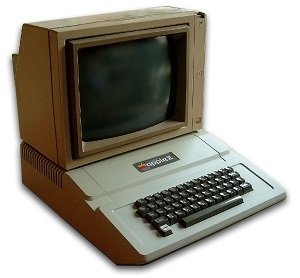
Then in 1979 I actually was able to afford an Apple II and brought it home. Her name was Suzi and carried a picture of her in my wallet. (Oh my, I guess I was a little geeky) I spent so much time experimenting with it. Everything was experimental back then. There were no programming books. No how to books. Just the companies reference manual that told you about memory locations and so I did a lot of peeking and poking. Computer lingo there ;)
My first game I created back then was snake. In 1980 I graduated high school and moved to Washington State by myself. I worked at a pizza parlor and also went cardboard collecting to sell for recycling. I would make $13 per load. With both of those incomes I was able to rent a room in a house with a group of guys from church.
Then I got my dream job. A new video retail store opened in town and they had an Atari 800 computer. I worked there as a sales person but in the slow times I would play around on the computer. Again the Atari was $1040 just for the main computer. The storage device was a cassette tape recorder which was another $100. I sold my Apple II and soon was able to afford the Atari and started creating my first games.
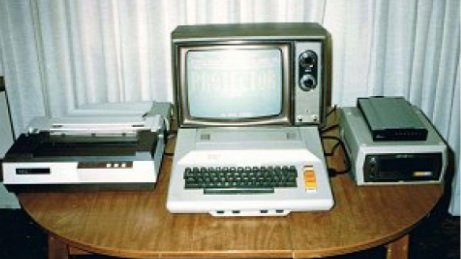
The first game I created on the Atari was again snake. I started Micro Mike's Computers and produced copies of my game on cassette tape, printed up some inserts on construction paper and put them in zip lock bags.
I would then take a few to the computer stores in the area and sell them on consignment.
This was so encouraging to see people's positive reactions to snake. I then created more games:
- Snake (1980, Atari, Micro Mike's)
- Nim (1980, Atari, Micro Mike's)
- Imperial Walker (1980, Atari, Micro Mike's)
- AutoRace (1980, Atari, Micro Mike's)
- Gunfight (1980, Atari, Micro Mike's)
With my games getting more popular I moved to Sunnyvale California and started selling at a number of stores there.
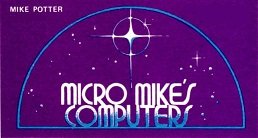
One store in particular was visited by another startup software company that was selling Apple games in the area called Crystalware. When the owner saw my programs he was impressed and he offered me $4,000 cash plus 30% royalties to license my games and port his over to the Atari. With Crystalware I created and translated 11 titles as shown below:
- Game Pack I (1981, Atari, Crystalware)
- Galactic Quest (1981, Atari, Crystalware)
- House of Usher (1981, Atari, Crystalware)
- Fantasyland 2041 AD (1981, Atari, Crystalware)
- Sands of Mars (1981, Atari, Crystalware)
- Beneath the Pyramids (1981, Atari, Crystalware)
- World War III (1981, Atari, Crystalware)
- Little Crystal I & II (1981, Atari, Crystalware)
- Laser Wars (1981, Atari, Crystalware)
- Waterloo II (1981, Atari, Apple, Crystalware)
- Protector (1981, Atari, Crystalware) later Synapse
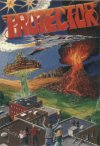
For a 19 years old I wasn't doing too bad financially. Crystalware and I had a falling out in 1982 and they gave me the rights back to Protector and the Game Pack. I went and talked with the owners of Synapse software and they were having success selling their File Manager. At the time they were running out of an apartment. They loved Protector and so they licensed it from me and also I started work on Protector II. In 2 years I created 4 games for them:
- Protector II (1982, Atari, Synapse)
- Chicken (1982, Atari, Synapse)
- Nautilus (1983, Atari, Synapse)
- Shadow World (1983, Atari, Synapse)
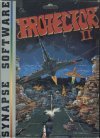



These programs were a hit for them and for me too since I was making royalties. I moved back up to Washington in 1983 and purchased a house. I then created 2 more programs and licensed them to a new software company that Art Linkletter had financed called Home Computer Software.
- PlaqueMan (1983, Atari, Commodore , Home Computer Software)
- Explorer 64 (1983, Commodore, Home Computer Software)
This was also the rise of MS-DOS and IBM compatibles hit the market for the consumers. One of the first was the Sanyo 550 with dual floppy drives. Each drive stored a whopping 160kb each.
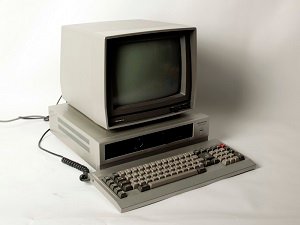
At this time I created my own software company named Olympic Educational Software and later changed to Olympic Business Systems that focused on creating software for the Sanyo computer and other IBM compatibles. The following are the programs that I created.
- Inchworm (1984, IBM, Olympic)
- Flash Card (1984, IBM, Olympic)
- Touch Skills (1984, IBM, Olympic)
- Spelling Bee (1984, IBM, Olympic)
- Trivia Mania (1984, IBM, Olympic)
- Speed Learning (1984, IBM, Olympic)
- PostMaster II (1984, IBM, Olympic)
- Finance Manager (1985, IBM, Olympic)
- Appointment Book (1985, IBM, Olympic)
- Master Menu (1985, IBM, Olympic)
- Networks Plus (1985, IBM, Olympic)
- Payroll (1986, IBM, Olympic)
- Inventory (1986, IBM, Olympic)
- Accounts Receivable (1986, IBM, Olympic)
- Accounts Payable (1986, IBM, Olympic)
- General Ledger (1986, IBM, Olympic)
- Order Entry (1986, IBM, Olympic)
- Recruiter (1986, IBM, Olympic)
- The Video Store (1987, IBM, Olympic)
- HOMARS Hotel & Motel Reservation System (1987, IBM, Olympic)
- Whatis (1988, IBM, Olympic)
- Reform (1988, IBM, Olympic)
But The Video Store software did very well and we even setup complete systems around the country. I remember some of the systems costing $30,000 just because of the cost of the multi-user hardware. Technology was changing so fast. I installed one system all the way on Cape Cod Massachusetts.
The educational software did ok and we had a fan base in the Sanyo market. The accounting software did good too.
We were using Quicken for our bookkeeping like so many other companies and something that took so much time for me was doing the Payroll in doing the calculations then entering the information into Quicken. So I created QuickPay for Quicken mainly for our needs. We changed our name to Envision Software Inc and we had our own packaging and it was all ready to go then Intuit found out about it from Egghead software and they wanted to license it from us.
At this point I was thinking if I wanted to continue my own software company with all the headaches or to license it to them and just makes royalties like before. I choose to license it to them which worked out very well. You can actually read that story in a book called Inside Intuit.
They saw that I was able to do fast work and so they also asked me to create QuickInvoice as an interim program before they release Quickbooks.
- QuickPay I (1991, IBM/Windows, Envision/Intuit)
- QuickInvoice (1991, Windows, Intuit)
- QuickPay II (1992, Windows, Intuit)
- QuickPay III (1993, Windows, Intuit)
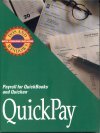
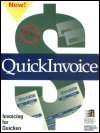
QuickPay was at the top of the charts for many years. In 1994 we sold everything and moved onto a sailboat in the Caribbean. I know, where did that come from? To be honest we just felt it was God's calling for us and what an adventure it was for the year. We worked with a church and helped them with a ministry. We went through a few major hurricanes without any damage by God's grace.

We then moved to the jungles of Puerto Rico and bought a 12 acre coffee farm. We worked with the church youth and I worked the farm. Intuit by this time finally came out with QuickBooks which had their own payroll program. So my royalties stopped. So as all good things must come to an end it was time to get back to work.

So in 1999 as the internet was just taking off and eBay was gaining popularity I found it was frustrating keeping track of items I was interested in on eBay and so I created AuctionTamer which had features like the first tabbed browser and a real time watch list. Because our internet would go out every time it rained we decided to move back to the States.
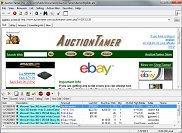
AuctionTamer was a great hit and I was constantly adding features. Every big website seemed to have their own auction listing. Even Microsoft, Amazon & Yahoo was into auction listings. AuctionTamer supported up to 25 auction sites at the height of the frenzy. Over time eBay dominated the market and now they are about the only ones left. eBay had a great affiliate program that paid us a percentage of what people bought.
Here it is 2016 and I'm still supporting and releasing updates for AuctionTamer. There have been other websites and projects that I've worked on in the last few years. It you would like to check out what's up and get some free tools of the trade then check out: http://mikepotterhere.com
I'm really excited to see what Steemit.com is doing and I hope to interact and share with many of you here.
Please say hi.
Wow Mike so many memories! Atari was a huge part of my childhood. Its so amazing to see how far we've come since then...
Absolutely! Yes we have come so far! What were some of your favorite games? I actually pulled out my original Atari 800 a few months back and played some of the old games. Star Raiders was my favorite. It was fun trying to play my old games. I found some people playing them and posted it here: http://mikepotterhere.com/atari-games/ Really fun reminiscing.
its hard to follow up so many great life stories ....I really enjoyed yours
Hi Mike we're almost the same age and I use to be in the electronics business as a tech for a company called Racal Milgo. They were the pioneers in modems. I remember when it went from 2400 baud all the way up to 9600 baud. Then it went to 19200 baud and we thought that was maxed out.... ha ha Keep on Steemin my friend.... You got my Upvote today.... @kbargold
Yes the blazing speed of 19,200 baud ;) Thanks.
Welcome to Steemit!
Thanks :)
Hi Mike! That is so cool! I'm too young to have played those games, but it must have been exciting to have designed games when they were a complete novelty. :)
Yes it was a blast. There were no teachers really. For the Atari all we had were reference manuals. Just peek here and poke there and all machine language.
Welcome. I was one kids in the 70's that had an Atari 2600. I then got a Commodore 64 and my buddy got an Atari 400. Great memories you help to create.
Thanks so much. Yes I also had a Commodore 64 and created Plaqueman and Explorer64. Both were great for their time.
Excellent trip down memory lane, my friend. You certainly provided a lot of enjoyment back when I was a kid. I played at least two of your games, probably more, but some of the memories have now faded. It was a blast to read all that!
Oh nice. Thanks.
Welcome. This is nostalgia heaven. I love the tech from the 1980s.
Glad to have you here, Mike! er... @mikehere :) What an incredibly sharp trajectory your field has taken. Must be pretty astonishing to see.
Welcome to Steemit Mike! So cool that you were an Atari game designer :)
Just in case you hadn't seen it yet, @roelandp made a Steem themed Streetfigher game that he updated today: https://steemit.com/game/@roelandp/sunday-is-for-steemfighter-ii-steempower-arcade-fight-now-with-player-1-controls-instead-of-ai-bot
Thanks, I will have to check it out. :)